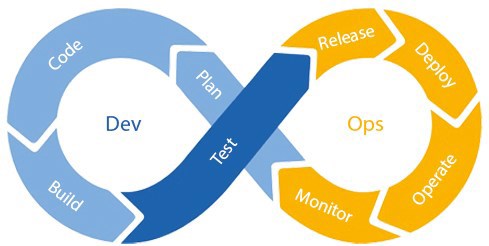What is DevOps?
DevOps is the collaboration between software development (Dev) and production management (Ops). It revolves around the close interaction between developers and operational teams. It's more than just a software development methodology. DevOps encompasses the core principles of Agile, with a focus on individuals, interactions, and collaboration. It forms a culture within the organization based on three crucial pillars: tools, processes, and people.
You might think from the above description that DevOps is merely a software development methodology, but that description is incomplete. Although it is related to and influenced by various software development methods, DevOps is more than that.
DevOps builds upon the core principles of Agile: the focus on individuals, interactions, and collaboration. The significant difference is that DevOps extends this approach throughout the entire organization, rather than solely within the development process. Therefore, DevOps can best be described as a culture within an organization that relies on three pillars: tools, processes, and people.
DevOps enables people and teams to work and collaborate more effectively by incorporating human and cultural aspects. The line of separation between previously isolated disciplines and different teams is eliminated. People, processes, and technologies come together, enabling continuous value delivery to your customers and end-users.

The DevOps Model?
The DevOps model, also known as the DevOps lifecycle, consists of eight phases: plan, code, build, test, release, deploy, operate, and monitor. These phases are traversed by cross-functional teams to deliver new software rapidly. Let's delve deeper into some important development steps.
1. Continuous Development (Plan and Code)
In this phase, activities are continuously identified and monitored visually (e.g., with Kanban and Agile). Consequently, all stakeholders have a clear picture of the team’s capacities and tasks can be easily distributed and prioritized.
The software for delivery is split into multiple sprints or short development cycles. Code is shared with the aid of a version control system such as Git.
2. Continuous Integration (Build and Test)
In this phase, new code is tested for bugs. The quality assurance (QA) team safeguards the quality of the software and tests its capability of satisfying the requirements in different test environments. The validated code can then be safely and continuously integrated with the master branch. Testing for bugs early on allows them to be rectified quickly and easily.
3. Continuous Deployment (Release and Deploy)
Once the new version of the software has been tested and validated, it can be transferred to the production environment. This begins with implementation of the new code on the servers and results in the ultimate production or deployment. This way, end users have direct access to new functions.
4. Continuous Monitoring (Operate and Monitor)
Once the new software goes live, the operations team can use monitoring to obtain information about the performance and usage patterns of the app. The operations team monitors the occurrence of bugs and other problems during usage of the software. Data are collected with an eye to future developments, which can in turn be picked up by the development team.
The Difference between DevOps and Azure DevOps
As you know, Azure is Microsoft’s cloud computing platform – a collection of services offered by Microsoft from its data centers. One of those services is Azure DevOps (previously VSTS), an environment that incorporates a range of services designed to ensure easy integration of DevOps within your organization.
You can add to the Azure DevOps services with the tools of your choice. So, whether you’re a Java, Node, or .Net developer or work in Jenkins, Ansible, or Puppet, Azure DevOps allows you to set up your end-to-end DevOps chain yourself.
Azure DevOps Services
The following is a brief outline of the Azure DevOps services. You can opt to use them all or choose only the services that you need to complement your existing operational processes.


Azure Boards
Allows you to plan, monitor, and discuss your teams’ activities.


Azure Pipelines
Azure Pipelines comprises a CI/CD pipeline that works for virtually any activity, platform, and cloud. With the aid of a Git provider, you can carry out continuous development, testing, and implementation.


Azure Repos
Azure Repos gives you an unlimited number of Git repositories in the cloud. Pull requests and advanced file management allow people and teams to work efficiently.


Azure Test Plans
Manual and exploratory test programs allow software to be both tested and released quickly and thoroughly.


Azure Artifacts
Azure Artifacts allows you to share code easily with different teams and organizations. You can share packages and add them to your pipelines.
Extensions Marketplace
Lastly, Azure DevOps also offers an Extensions Marketplace, which contains more than one thousand extensions that you can add to your Azure DevOps environment, such as Slack, Jenkins, Docker, and Kubernetes.
Finally, Azure DevOps also offers an Extensions Marketplace. Here, you can find over a thousand extensions to add to your Azure DevOps environment, such as Slack, Jenkins, Docker, and Kubernetes.
In the coming weeks, more articles about Azure DevOps and the extensions available in the Marketplace will be published. Don't want to miss out? Subscribe here to our Intercept Insights.





